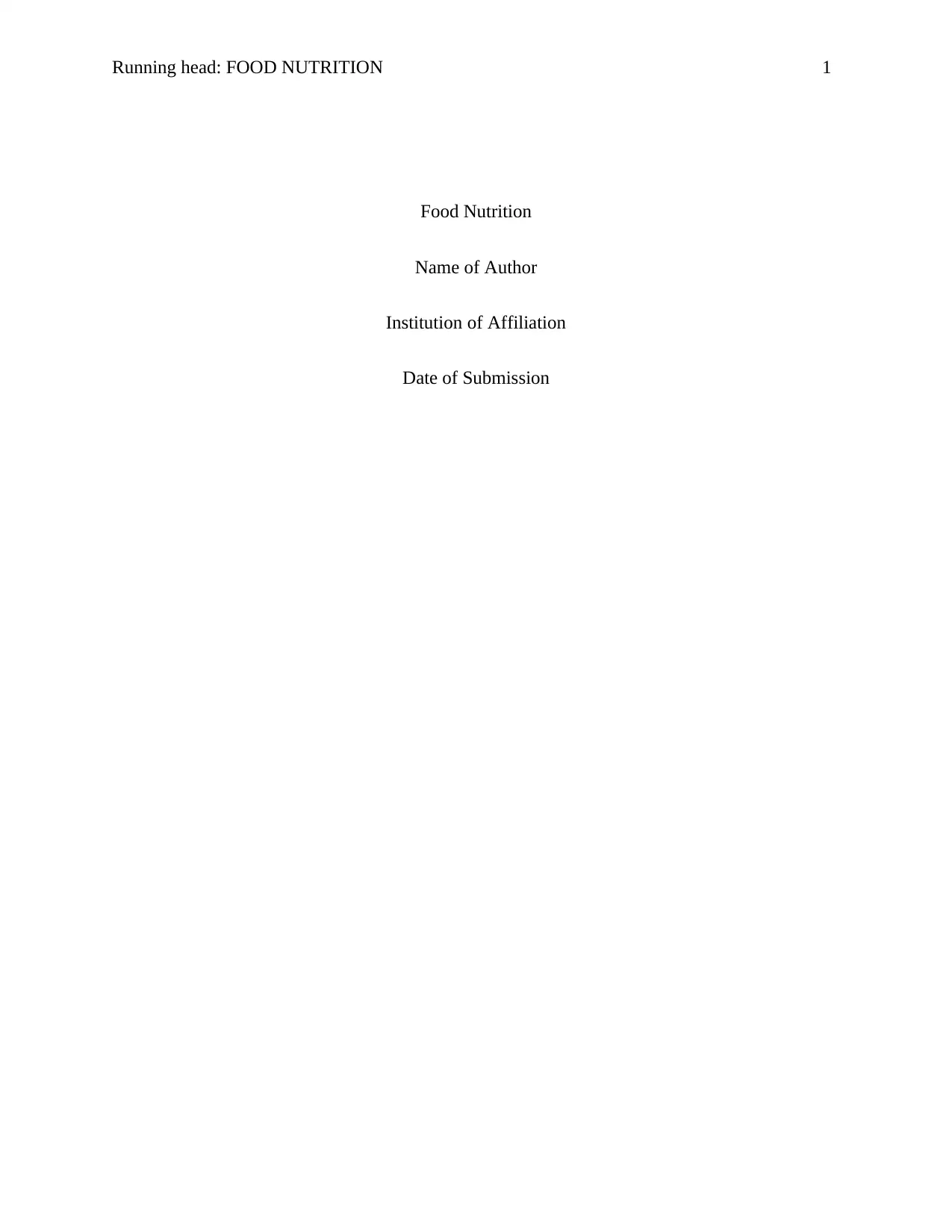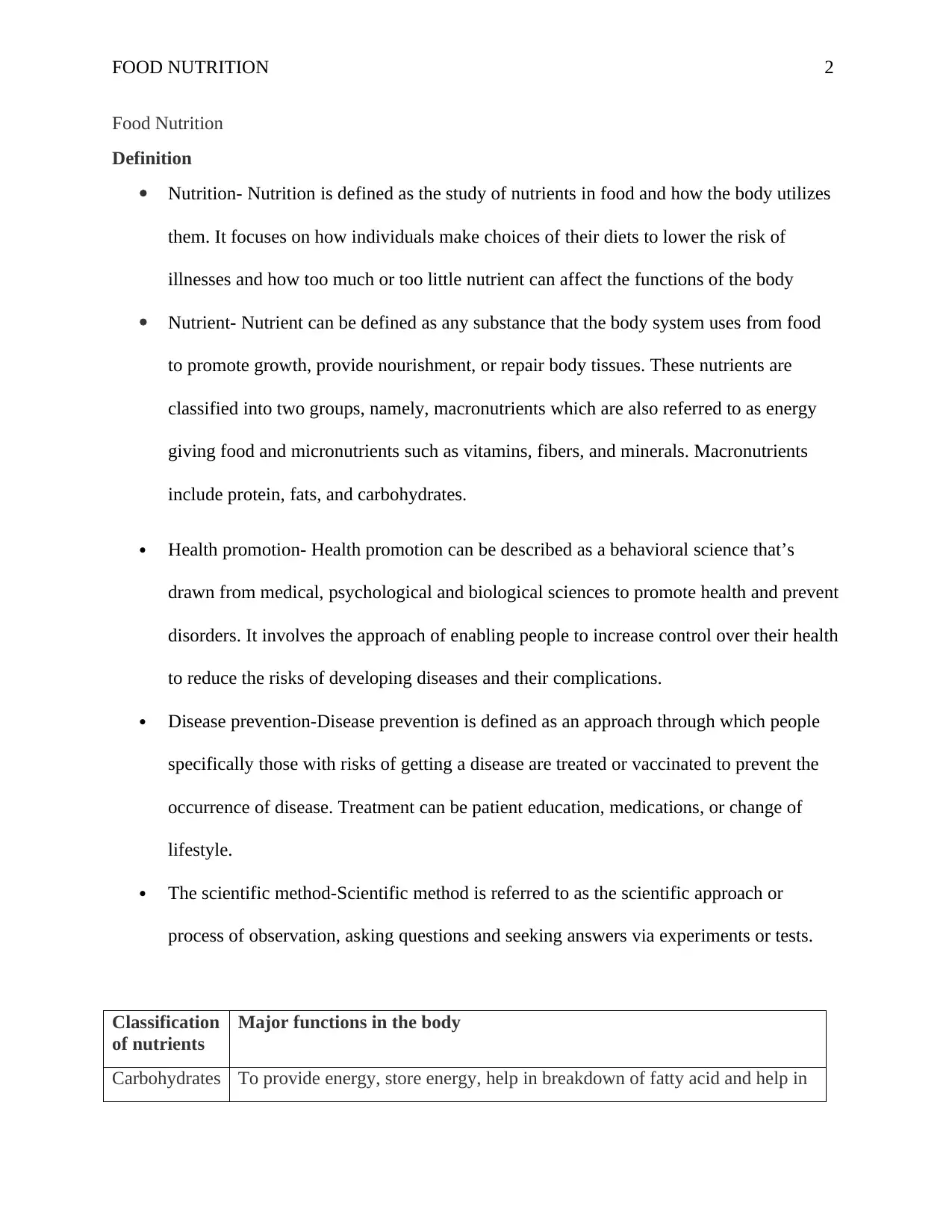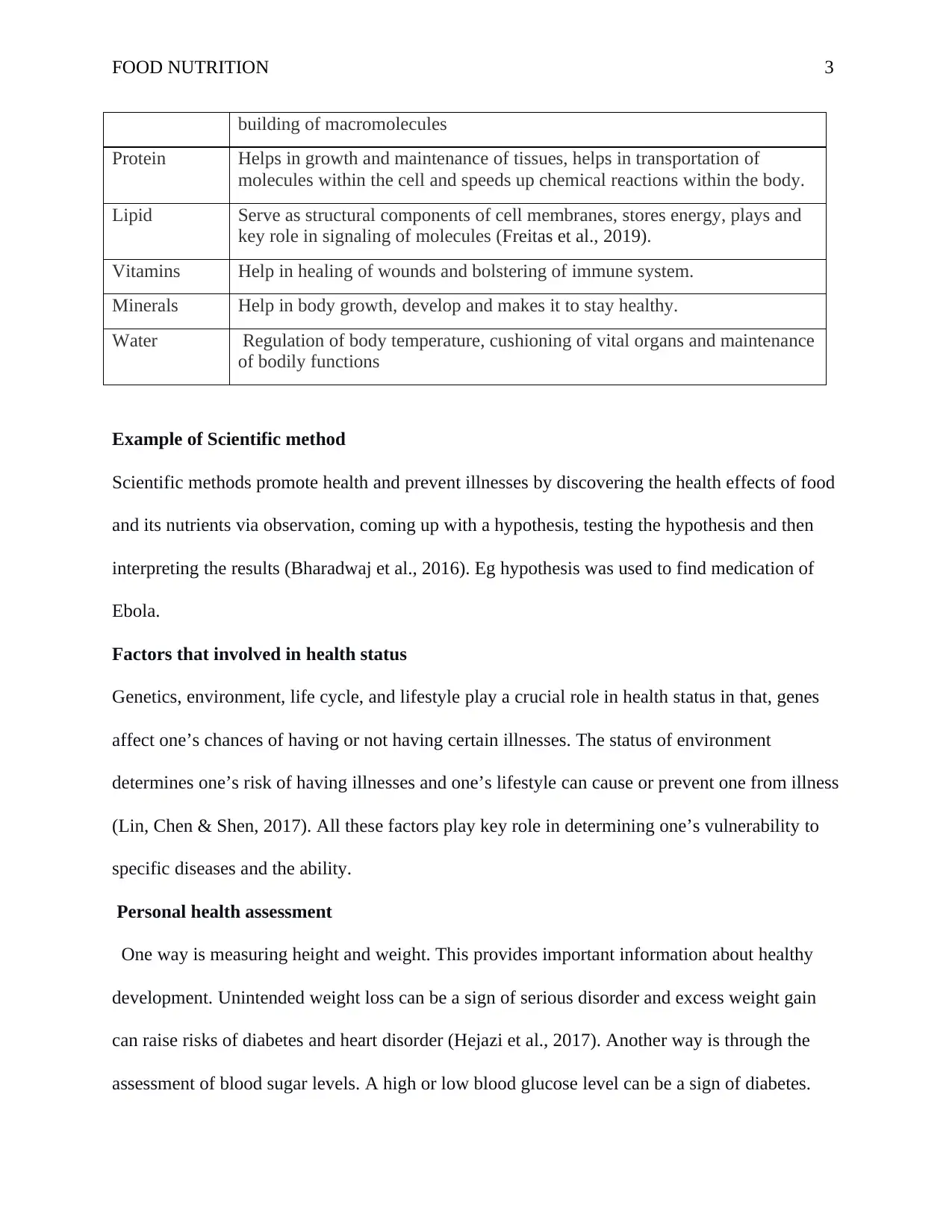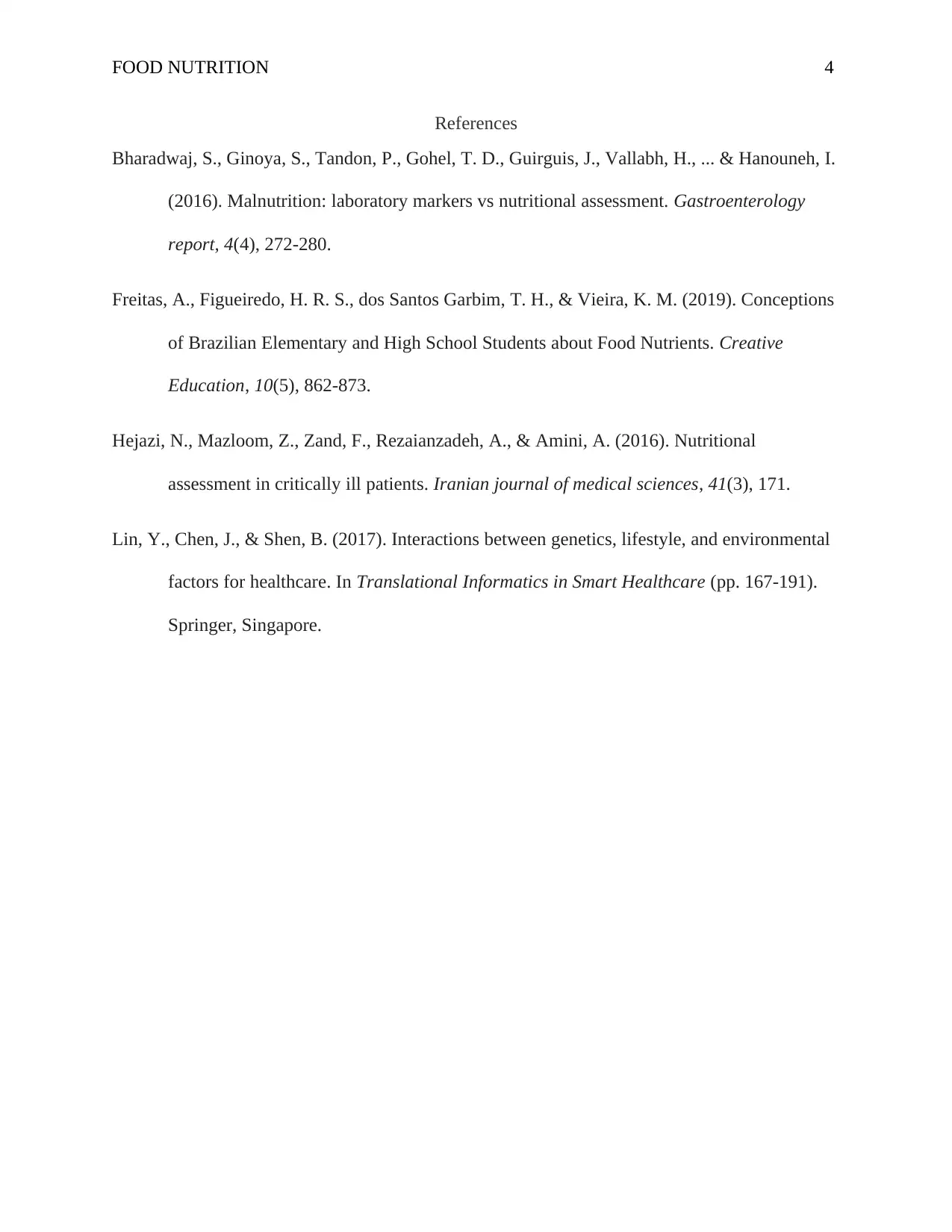Food Nutrition Report: Scientific Method, Health, and Assessment
VerifiedAdded on 2022/08/25
|4
|798
|18
Report
AI Summary
This report delves into the realm of food nutrition, providing a comprehensive overview of essential concepts. It defines nutrition and nutrients, categorizing them into macronutrients and micronutrients, and elucidates their respective roles in the body. The report explores health promotion and disease prevention, highlighting the significance of the scientific method in understanding the health effects of food and its nutrients. It discusses factors influencing health status, including genetics, environment, life cycle, and lifestyle, emphasizing their impact on disease vulnerability. Furthermore, the report suggests personal health assessment methods, such as measuring height and weight and assessing blood sugar levels, to monitor and maintain well-being. Finally, the report cites several sources to support its information.
1 out of 4











![[object Object]](/_next/static/media/star-bottom.7253800d.svg)